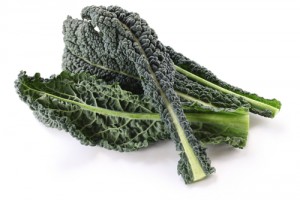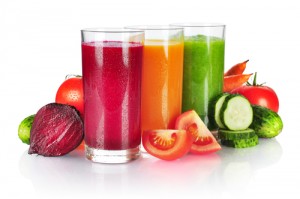The post Kale: The Bitter Truth appeared first on Buddhaful You.
]]> Kale, my favourite dark leafy green. A true life saver. I credit this stellar, yet humble green in returning my sanity and my sleep many years ago. Faced with deep depression and insomnia I tried fresh greens. Within one week of including uncooked dark leafy greens in my diet, my depression disappeared and I had a solid eight hour sleep for the first time in over 3 years.
Kale, my favourite dark leafy green. A true life saver. I credit this stellar, yet humble green in returning my sanity and my sleep many years ago. Faced with deep depression and insomnia I tried fresh greens. Within one week of including uncooked dark leafy greens in my diet, my depression disappeared and I had a solid eight hour sleep for the first time in over 3 years.
Kale and other greens are rich in chlorophyll. Chlorophyll is the pigment in vegetables that makes them green and it is involved in transforming the sun’s energy to energy that we can use for food. The benefits of consuming chlorophyll, also known as ‘plant blood’, are numerous. Here are a few:
Chlorophyll
- helps our bodies detoxify and can purify our blood.
- can help make our bodies strong and healthy.
- builds blood, renews tissues, counteracts radiation, activates enzymes, improves liver function, establishes healthful intestinal flora.
- also benefits anemia, reduces high blood pressure, relieves anxiety and nervousness, strengthens intestines.
- rich foods can slow down the aging process, improve mental capacity, and enhance a healthy weight loss program.
- rich foods can protect the vascular system by lowering blood fat and guarding against artery deterioration.
- Greens are highly cleansing foods.
“Studies suggest that vitamin B9 (folate) may be associated with depression more than any other nutrient, and may play a role in the high incidence of depression in the elderly. Between 15% and 38% of people with depression have low folate levels in their bodies and those with very low levels tend to be the most depressed.” (from www.umm.edu )
Rich in Minerals and Vitamins
Rich in minerals and vitamins, kale is among the most nutritious vegetables. Kale is loaded with calcium, potassium, indoles (cancer-fighting substances), beta-carotenes, and other antioxidants.
A 100 gram serving (1.5 cups) of kale provides double the amount of vitamin-A compared to regular red and green leaf lettuces. This works out to be 306% of the recommended daily value. And, you receive 134% of the RDV for Vitamin-C. Kale is also abundant in calcium, magnesium, silicon, boron, zinc, and copper.
One study revealed that kale, a low-oxalate vegetable, is a good source of bioavailable calcium. Other members of the brassica family includes broccoli, turnip greens, collard greens and mustard greens. These low-oxalate, calcium-rich vegetables are therefore also likely to be better sources of available calcium than high-oxalate vegetables such as spinach or chard.
Since magnesium is essential for boosting bone mineral density, kale is an ideal source for bone health. Kale is an often-overlooked vegetable that happens to be loaded with folate (folic acid), an important B vitamin for everyone.
Folate, present in dark leafy greens such as kale, is also known as vitamin B9 or folic acid. Folate is crucial for proper brain function and plays an important role in mental and emotional health. It is a water-soluble vitamin that works along with vitamin B-12 and vitamin C to help the body digest and utilize proteins and to synthesize new proteins when they are needed. Folate is necessary for the production of red blood cells and for the synthesis of DNA, which is used to guide the cell in its daily activities.
Kale is available in many varieties, including purple, Russian, and “dinosaur”. Although kale can taste slightly bitter to those not acustomed to its flavour, it is most palatable when combined with other, sweeter ingredients, such as cucumber and apple. As an individual increases their consumption of kale over time, it begins to taste less bitter and can even taste sweet. Especially when the kale has been exposed to a light frost during cultivation.
Ancient History
Kale is a primitive cabbage native to the eastern Mediterranean or to Asia Minor. Due to migrating tribes over thousands of years, it is not certain which of those two regions is the origin of the species. The Latin name Brassica oleracea defines this green as a ‘headless cabbage’.
All principal forms of kale eaten today have been known for at least two thousand years. The Greeks and Romans grew several kinds of kale. European writers mentioned kale in the 1st, 3rd, 4th, and 13th centuries. Although the first mention of the kales in America was in 1669, it is probable that they were introduced earlier.
Enrich your Diet
Find ways to include kale in your diet everyday. Making friends with this king of greens is a fabulous way to get a varienty of necessary nutrients. Here are some tips:
Shred: Enjoy kale shredded or finely chopped into your salad.
Juice: Juice kale with some apple and celery for a delicious beverage.
Green Smoothies: Combine kale with other vegetables and fruit in a Vitamix (superblender).
PEAR-KALE SMOOTHIES
Green Smoothies blend best in a powerful blender, like a Vitamix. These recipes are suprisingly sweet. Over time you may want to decrease the amount of fruit added.
If you are new to eating kale, start with small amounts first, then increase over a few weeks. I prefer dark green kale, such as lacinato, dinosaur or black kale. The first two recipes are by Victoria Boutenko. Enjoy!
1) Pear-Kale-Mint
4 ripe pears
4-5 leaves of kale
1/2 bunch of mint
Water
2) Pear-Kale with a Bite
2 ripe pears
4-5 leaves of kale
1 handful of raspberries
1 apple
1 small piece of ginger
Water
3) Bosc Pear-Raspberry-Kale
3 bosc pears
1 handful of raspberries
4-5 leaves of kale
Water
4) Tara’s Favourite Green Smoothie
3 to 6 leaves of dark green kale
2 apples
3 stalks
1/2 cup or more Water
Ginger (optional)
Note: I originally wrote this article in 2005 for RawBC, but it is worth a repost
The post Kale: The Bitter Truth appeared first on Buddhaful You.
]]>The post 7 Sensory Strategies to Eat More Fruit & Veggies appeared first on Buddhaful You.
]]>
So, you’re looking to improve your health by increasing more fruit and vegetables in your daily diet? Increasing the amount and quality of living foods in your diet is a great way to provide the raw materials for your body to fuel and heal itself. Here are 7 helpful strategies to get those yummies into your tummy.
1. Mix it up
Have you been eating the same old things your mom raised you on? If so, it may be time to try something new and exotic. Have you savored the sweetness of a papaya or a fig? Ever enjoyed the earthiness of burdock root in a soup or stew? Check out your local organic grocer for items you’ve never tried and bring them home. Do a search online to see how you can incorporate them into your recipes.
2. Juice your veggies
Get your body vibing with the juice of a great combo of vegetables (and even a little fruit). The benefit of veggie juices is that your body is able to absorb the nutrients very quickly. Enjoy juicing vibrant greens like kale, spinach, and collards. Add in some carrots, beets and a little apple.
3. Spice it up!
Are you in a rut with your recipe repertoire? There are so many free healthy and delicious recipes available online, so there is no excuse to not dabble with something new. You never know what new favorite dish is waiting for you. Or you can even try adding some spicy pepper or curry spices to an old favorite recipe.
4. Green your smoothies
If you haven’t joined the green smoothie revolution, I recommend you give it a try. A basic green smoothie is made with greens combined with fruit and a liquid. For example, spinach + berries + pear + coconut water. Incredibly nutrient dense and delicious, you can have green smoothies for any meal.
5. Mash it or blend it
Eating food with your hands is super sensory. Chop up some veggies and dip them into a tasty dip, pate or sauce. Great mashing and blending foods include chickpeas, red pepper, avocado or eggplant.
6. Grow a garden
Nothing says sexy like digging in the dirt! If you have the time and the garden space, enjoy the vibrant foods you can grow right out of your back yard or even in your own home.
7. Explore your local farmer’s market
Roaming my farmer’s market is one of my favorite ways to spend a Saturday morning. I am filled with incredible inspiration for preparing meals with the local veggies and fruits that are grown locally and organically.
The post 7 Sensory Strategies to Eat More Fruit & Veggies appeared first on Buddhaful You.
]]>